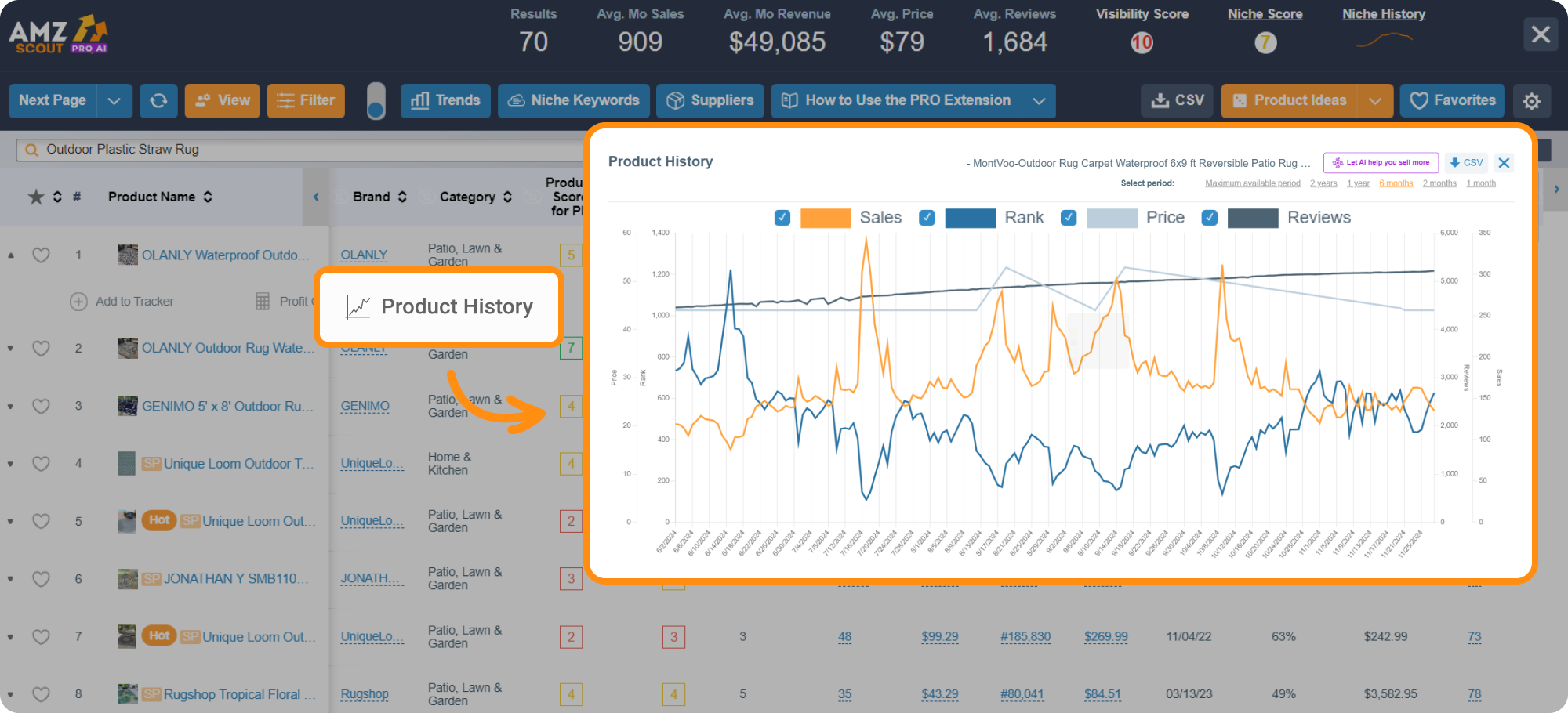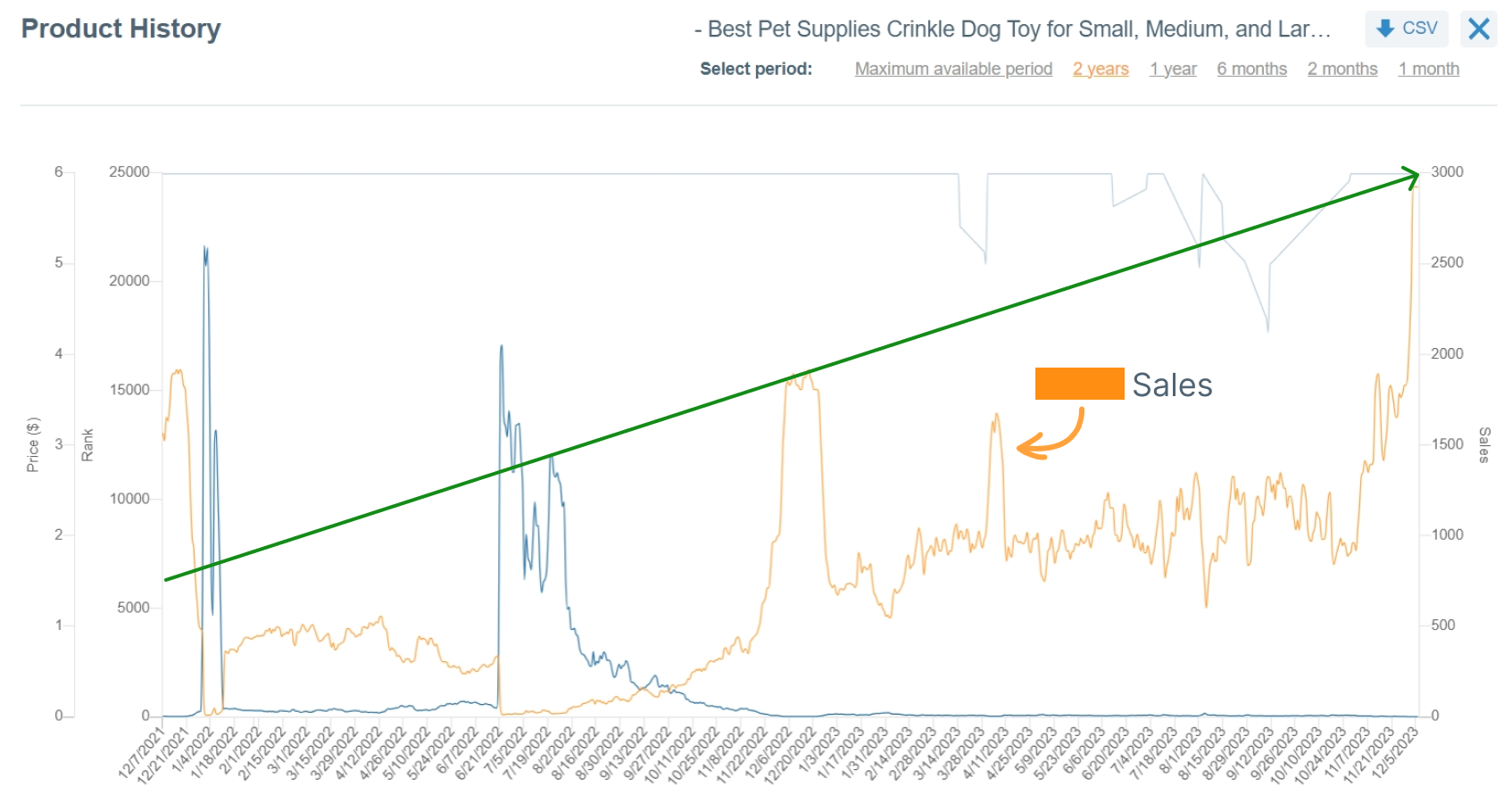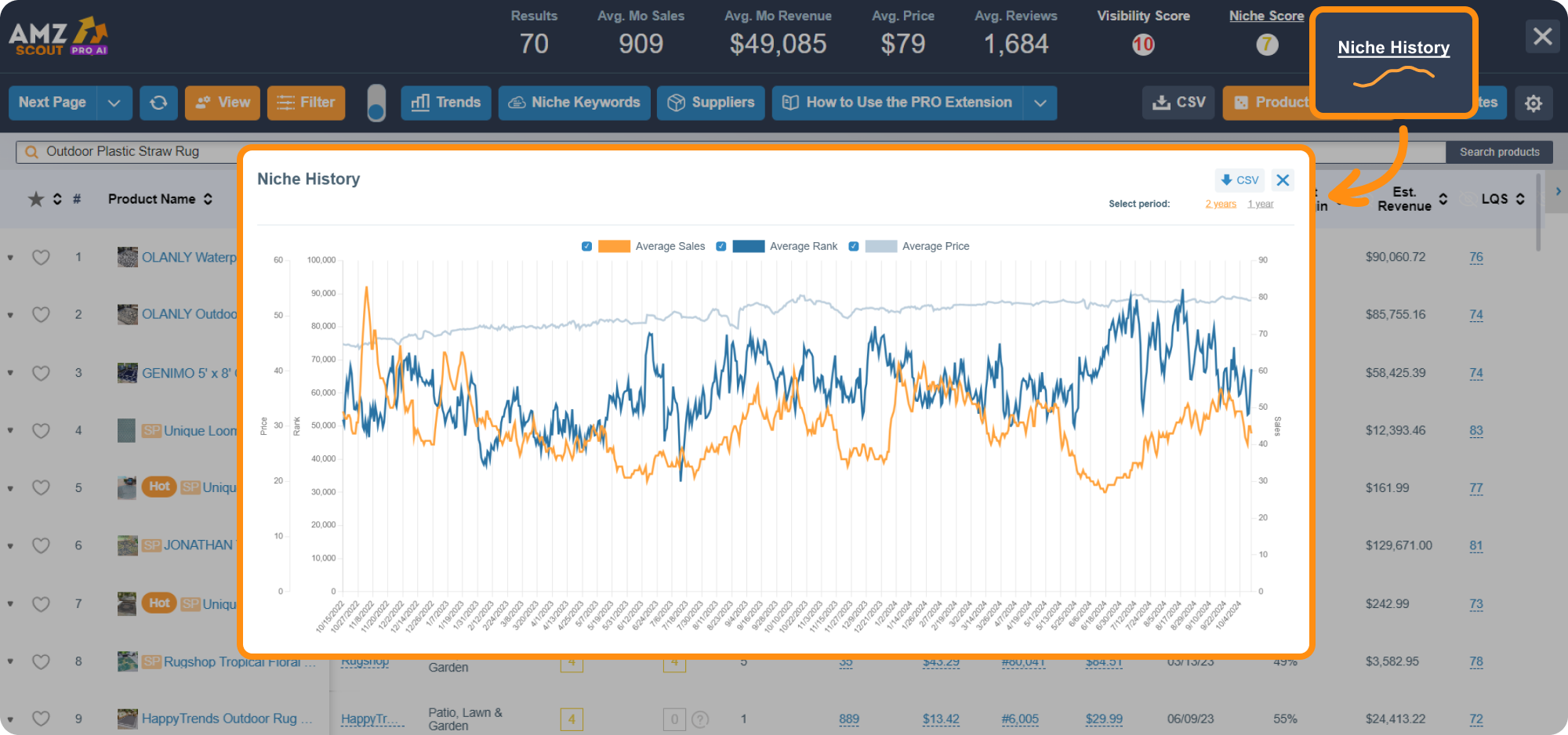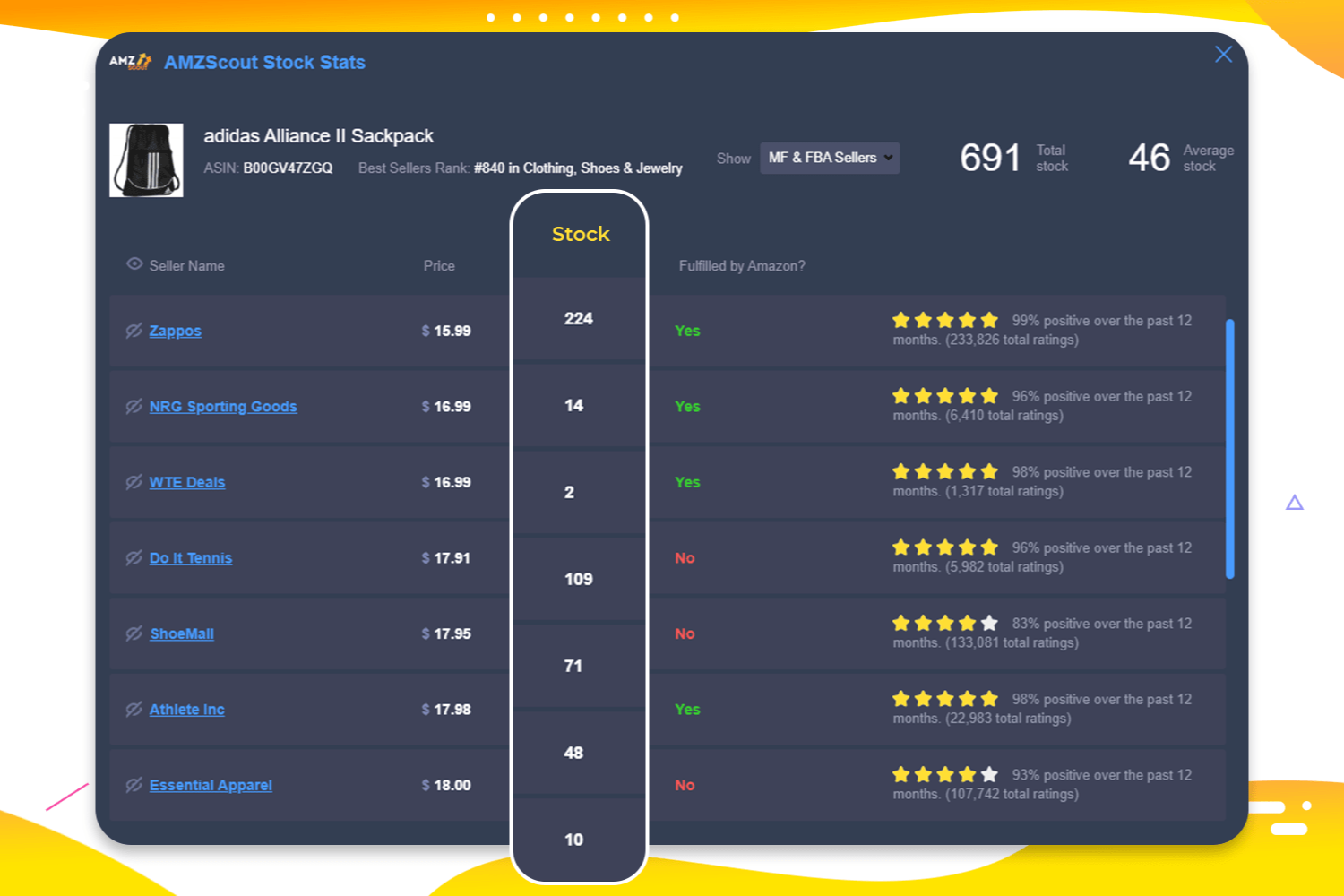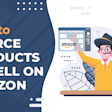
How to Perform Amazon Competitor Analysis
Amazon is among the most frequently-visited shopping websites globally, and offers a mix of both sales opportunities and intense competition. Analyzing one’s competitors is crucial for success, as it helps sellers make informed decisions and conduct effective marketing. This article explores the importance of Amazon's competitor analysis and implementation of tools for efficient exploration.
Table of contents
Why Should You Analyze Your Competitors on Amazon?
Conducting comprehensive research on your competitors offers vital insights, which can help you fine-tune your business approach and gain a substantial advantage on Amazon. Here are six key reasons why you should perform an Amazon competitor analysis:
Maintain competitive prices. Insights into competitors’ pricing strategies will allow you to set profitable rates for your own products.
Develop effective promotional strategies. You can learn from both your competitors’ successes and mistakes to help you create the most effective marketing campaigns.
Discover market opportunities. Performing competitor analysis uncovers market gaps and unmet customer demands that may be overlooked by your existing competitors.
Optimize your advertising strategy. By reallocating your budget towards highly relevant keywords or refining your keyword targeting parameters, you can enhance the efficiency and profitability of your advertising campaigns.
Understand your customers’ preferences and expectations. Examining feedback and reviews for your competitors’ products allows you to understand the expectations of your customers and align your offerings with their needs.
Strategically position yourself. Understanding your competitors' strengths and weaknesses helps you find your own “point of difference” that distinguishes your product and creates a more compelling value proposition for customers.
Competitor analysis on Amazon requires multiple steps. Before analyzing competing merchants, first you need to identify who they are.
How Do You Identify Your Key Competitors?
The easiest way to identify your competitors is by exploring the niche in which you sell. Utilizing specific keywords can further assist you in pinpointing your competitors more accurately and efficiently. For instance, consider John, who sells t-shirts tailored to men who are passionate about rock bands. To pinpoint his direct competitors, he can search for “rock band t-shirts for men” through the Amazon database, where he’ll be able to check the top results and best sellers. John can also apply additional filters, such as price, fit, size, etc., to help him narrow down his field of competitors.
It's important to not only analyze products that are similar to yours, but also to assess your overall niche and market trends. Remember that when customers search for "rock band t-shirts for men", they will get many results.
Once you identify your main competitors, you can proceed with your Amazon competitor research process.
7 Criteria for Analyzing Competitors
To conduct a comprehensive competitor analysis, we will focus on several key metrics to assess their strengths and weaknesses, enabling you to enhance your own performance.
1. Review the Sales History of Your Competitors’ Products.
Sales numbers serve as crucial indicators of a niche or product's viability. If similar products demonstrate consistently low sales, it may suggest limited demand. On the other hand, widespread high sales among numerous sellers (even new sellers) could signal a lucrative opportunity. Analyzing sales history also enables you to anticipate demand trends and optimize your own inventory levels.
To see how many items your competitor is selling, you can utilize the AMZScout PRO AI Extension, which has a free trial available. This tool not only shows sales data, but also provides sellers with other essential product information, such as the main product keywords, seller type, product rank, and more, so viewing metrics on your competitors becomes easier.
Follow these steps to check the sales history for your competitors:
1. Get the AMZScout PRO AI Extension for Chrome. Download and install the PRO AI Extension.
2. Enter any product or a category in the search field.
3. Open the AMZScout PRO AI Extension. Click on the AMZScout icon in the bottom left corner of your browser.
4. Check the sales history for your competitors.
Click on the item you are interested in analyzing further.
Select “Product History” under the item to display statistics for your selected product in the new window.
In the upper righthand corner, choose a specific period of time (from one month to the maximum available period), which includes sales data from the product's launch on Amazon, to check the sales fluctuations over a certain period of time.
5. Check the Niche History. Click on “Niche History” in the upper righthand corner to examine the overall sales history within the niche.
Products may experience fluctuations in sales due to factors such as advertising activation or deactivation, product stockouts, and other reasons. However, by analyzing the overall sales history within the niche, you can gain valuable insights into market dynamics and identify emerging trends.
When you’re armed with this information, you can accurately anticipate whether sales numbers are poised to rise, decline, or remain steady and plan your financial decisions accordingly. This includes sourcing from suppliers and managing inventory levels.
2. Consider Your Competitors’ Product Quality.
To learn about your competitors, one approach is testing their product yourself. However, this can be both costly and time-consuming. Instead, consider leveraging the following two sources of insights:
Customer Reviews
According to statistics, the majority of negative reviews are left because of poor product quality. However, it's also essential to note that low-star ratings can be influenced by other factors (like lengthy delivery times). A thorough review of your competitors' customer feedback can provide you with valuable insights into specific dislikes, enabling you to emphasize your product's strengths effectively.
Additionally, examining other products’ positive reviews offers beneficial information on each product’s features and seller’s services, such as appealing packaging or complimentary gifts, that you can integrate into your own approach.
To streamline your research, consider using an AI Review Analyzer. Simply enter your competitor’s ASIN, and the tool will generate a comprehensive breakdown of customer feedback, identifying recurring strengths, weaknesses, and key product features that matter most to buyers.
Note: By analyzing these patterns, you can identify opportunities for product improvement and ensure that your offering meets customer expectations more closely. Additionally, these insights help you craft a more compelling product listing by incorporating the exact words and phrases that resonate with your audience.
Analyze the Q&A Section
It’s also useful to analyze your competitor’s customer service in the Q&A section. Do they respond to customers' inquiries promptly, and if so, are their answers friendly and helpful? For instance, in industries like clothing and footwear, customers tend to value the inclusion of size charts, measurements by size, photos depicting material composition, and similar details.
Below you can see an example of a customer who asked about a t-shirt's material composition and received a vague response from the seller that does not help the buyer decide whether the purchase is necessary. This type of lack of helpful information can deter potential customers and lead to lost sales opportunities.
By analyzing customers' queries and preferences, you can refine your strategy to better resonate with your target audience. This approach will enhance the appeal of your listings, ultimately driving higher engagement and sales. Customers tend to prefer Amazon sellers with a high number of reviews. Positive reviews can have a significant impact on potential buyers' decision to purchase from you.
3. Monitor Price Fluctuations.
Tracking price changes is a crucial component of an effective pricing strategy, as this enables you to make your listing more competitive and calculate the potential profitability of a product in advance, especially during the product selection phase. With the AMZScout PRO Extension, you can monitor price fluctuations closely.
Follow these steps to find out how to do research on price fluctuations:
Install and open the AMZScout PRO AI Extension (see instructions above).
Examine the pricing fluctuations of your competitor's product. Click on “Product History” to display the statistics for your selected product in the new window. By utilizing this feature, you can monitor price fluctuations of the product.
By analyzing your competitors’ prices fluctuations, you can get benefits by:
Gaining insights into sales trends. It's important to analyze the average sales numbers within a specific niche. For example, if your competitors are reducing their prices, this may indicate a decrease in sales. This might be due to low demand within the market, which may lead to considering other niches. Alternatively, it could indicate seasonal trends that should be taken into account when choosing products as you optimize your inventory strategies.
Gaining insights into consumer behavior and market dynamics. Factors like product reputation, positive reviews, or unique design may contribute to increased sales despite higher prices. These insights can aid sellers in making strategic pricing decisions that are aligned with market trends and customer expectations.
Understanding profitability. Having knowledge of an item’s price history provides more accurate calculations of a product's profitability throughout various seasons, particularly when seasonal price fluctuations are frequent. For instance, an analysis of prices and sales before the holiday season might show higher prices, but this does not necessarily ensure the same sales volume throughout the rest of the year. If we look at the example of Christmas bulbs, demand and prices may increase leading up to the holiday season, but might not maintain the same level of sales throughout the year.
When evaluating your competitors' performance, it's essential to consider that other unknown factors can also influence competitors' sales.
Utilizing pricing analytics helps make strategic pricing decisions and position products relative to competitors.
4. Find Your Competitors' Keywords
In the context of Amazon and online retail, keywords refer to the terms that potential buyers enter into the search bar when looking for items on the platform. Sellers can incorporate these keywords in their product listings strategically to increase the chances of their product listings being found by potential buyers. This helps to improve visibility and attract more customers.
Understanding which keywords are utilized by your Amazon competitors is crucial for several reasons:
Optimizing product listings. By using relevant and high-performing keywords, you increase the visibility of your products in Amazon search results.
Running effective ad campaigns. You can use similar keywords of your competitors to compete effectively for visibility.
How to Find Competitors' Keywords on Amazon
Use the following instructions to conduct a survey:
Go to the AMZScout Reverse ASIN Lookup.
Start your free trial. Enter your email address (no credit card details are required).
Enter the ASINs of your competitors’ products. Enter the ASIN (Amazon Standard Identification Number) of any product(s) you wish to analyze. You can find the ASIN in the "Product details" section on the Amazon product page.
Get Keywords. After entering the ASIN(s), click "Find Keywords". The finder will display a list of keywords, which are words or phrases customers use to search for a product on Amazon. By analyzing this list, you can identify which keywords your competitors use for promotion, discover new keyword ideas for your own listing, and optimize your ads.
Check the results. For each keyword, there are 10 parameters (such as the search volume, the product's search ranking, the average number of monthly sales of products on page one for each keyword, and more). If you encounter any issues, refer to the tutorial that explains each of these parameters for clarification.
Download the data in an Excel file format. This will allow for further analysis and manipulation.
5. Analyze Your Competitors' Amazon Listings
Once you've identified your competitors' keywords, the next step is to examine how they incorporate them into their product listings. These steps outline how to run a comprehensive analysis of a product listing:
Product title. Check which keywords your competitors use for the title, and the order in which they use them. Assess whether the title includes vital customer information such as the brand name, product model/type, or color. These details are often the initial points customers look for.
Description. Review your competitors' product descriptions. It's essential to maintain an original structure with concise, easily readable text, that isn't overly saturated with keywords.
Product images. Examine the quality of images used by your competitors and consider what you might do better for your listing. Ensure that your product images showcase the product from various angles or provide examples of its usage.
Product videos. See if your competitors incorporate videos into their listings. Statistically, videos tend to attract more customer attention, fostering trust and increasing the likelihood of purchases. If your competitors don’t include a video, this presents an opportunity for you to stand out.
Bullet points. Amazon has limitations on the number of characters and bullet points that can be used in their product listing templates. Therefore, it’s important to carefully examine the features, benefits, and unique selling points of a product that competitors highlight in order to attract customers. For instance, if your competitors focus only on the product's aesthetic appeal, you can set your product apart by mentioning the problems it solves or the needs it fulfills.
Consider the tone and language used by your competitors. For instance, an unappealing introduction, even with a clear bullet structure, may not captivate customers.
You can also check out these practical strategies and tips to enhance your Amazon ranking and boost your sales. This resource helps sellers make data-driven decisions, optimize their product listings, target profitable keywords, and compete on Amazon effectively.


6. Verify Your Competitors' Stock Quantities.
It’s important to see if your competitors' products are consistently in stock, as this can present an opportunity to capture additional sales on unmet demand. The AMZScout Stock Stats software can help you conduct this evaluation easily.
Follow these steps to use the checker:
1. Install the AMZScout Stock Stats Chrome Extension. This extension is free to use, and does not require any credit card information.
2. Launch AMZScout Stock Stats.
Open the product page of any desired product.
Access the extension in Chrome. Click on the extension icon, located in the Chrome toolbar, to open the extension tab.
Locate and click on the "AMZScout Stock Stats" option in the extension tab.
3. Review the data in the new window. Check the Stock Amount to evaluate the product's availability.
4. Analyze additional data. There are also various statistics related to the product:
Fulfillment Method: whether the product is fulfilled by Amazon (FBA) or by the seller (FBM).
Seller Information: the name and link to the store offering the product.
Price: current price of the product on Amazon.
Reviews Statistics: information about the product's reviews, including the number of reviews and average rating over the last 12 months.
Monitoring your competitors' product availability, pricing, and other metrics helps sellers optimize their strategy on Amazon and maximize sales opportunities.
7. Check Out Your Competitors' Social Media Presence.
Last but not least, you can examine your competitors' presence across various social media platforms, including Instagram, Twitter, Pinterest, and Facebook.
By scrutinizing these elements, you can gain valuable insights into the following aspects:
Their social media engagement and product promotion strategies (like using blogs, giveaways, partner posts, etc.).
Popular trends within your industry.
Methods for attracting more visitors to your Amazon store (such as advertising on social media platforms, strategic use of hashtags, hosting contests, etc).
The type of content your competitors use (Reels, testimonials, etc.).
Studying how your competitors use social media can provide practical ideas to help you improve your marketing strategy, thereby increasing visibility for your products and attracting more traffic and sales to your Amazon store.
Conclusion
Competitive analysis on Amazon is crucial for strategic success, offering valuable insights that serve as a roadmap for sellers to enhance their market presence and position themselves effectively. While conducting a thorough analysis may seem challenging, remember that the AMZScout toolkit is there to assist you achieve impressive gains.


